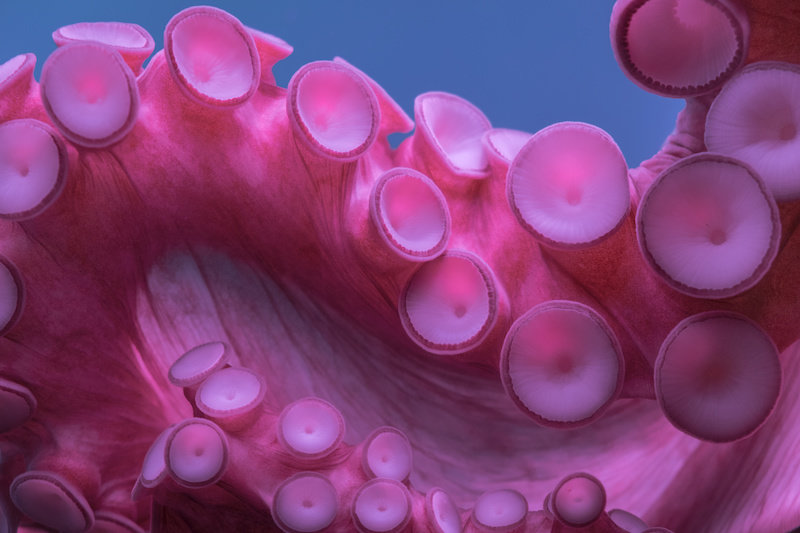Cephalopods Inspire Advancements in Thin Tissue Grafts

In some surgical procedures, tissue grafting is vital. In grafting, tissue from one part of the body may be taken and moved to another part, without taking the tissue’s blood supply. The replaced tissue will be allowed to grow its new blood supply in the area where it’s placed. In some cases, the graft is artificially manufactured.
Classifications of grafting
There are four types of grafting. Two types are not considered as foreign material. Thus the chance of rejection by the recipient is meager, if at all. These are isografts and autografts. When the procedure is an autograft, the tissue is harvested from one part of a person and transplanted into another area of their body, such as a skin graft. In an isograft, the tissue is taken from one person and transplanted on another person, such as between identical twins because they have a similar genetic constitution.
In the other two types of grafting, the chances of rejection are high because the recipient’s body may consider the tissue as foreign material. In an allograft, the tissue is taken from one person and transplanted on another person, who does not share the same genes. In a xenograft, the tissue from one species is placed on another species, such as from an animal to a human or vice versa.
Skin grafting
For most people, grafting is usually associated with skin grafting. Not many people know that there are several types of tissues, such as fat, blood vessels, neurons, tendons, nerves, bone, skin and cornea. The last two are the most commonly used materials in grafting.
When there’s skin loss because of surgery, infection, burn, or wound, the most common treatment is skin grafting. The procedure reduces the period of treatment and hospitalization that a patient needs. Skin grafting can help improve the appearance and function of the damaged skin.
Thin tissue grafting is a delicate procedure
Skin grafting is a delicate procedure because the tissue is often very thin, sometimes thinner than tissue paper, which means than it is prone to damage such as tearing and wrinkling.
Many changes have developed through the years for fragile layers of tissue transplantation procedures. Many doctors and surgeons have replaced and repaired damaged tissues, such as transplanting corneal tissue to treat blindness.
However, the process remains very slow and delicate. The procedure often requires taking the tissue from a culture medium where it is grown and transferring it to the target area to be treated. The safe gripping of the ultra-thin sheets of tissue presents a huge challenge because they are so fragile.
Currently, the usual process is to grow the tissue on a polymer base that is sensitive to heat. When the heat is applied, the polymer shrinks and the tissue is released on the target site. The delicate process can take between thirty minutes to one hour.

Drawing inspiration from the suction cups of cephalopods
Squids and octopi are cephalopods, and the suction cups on their tentacles became the inspiration of researchers to develop a device that can safely pick up the thin tissues and make the skin transplantation process faster.
A research team at the University of Illinois at Urbana-Champaign, headed by Prof. Hyunjoon Kong, with the collaboration of researchers from the Korea Advanced Institute for Science and Technology, South Korea’s Chung-Ang University and Purdue University, developed a manipulator that can safely pick up the tissues and release them quickly.
They based their device on the sucker of an octopus. They observed that the suction cups on the tentacle of an octopus could pick up dry or wet objects and release them by changing the pressure the suctions exert on the object.
The new device can safely pick up the tissue, even flexible biomedical electronics, transfer it to the target location and release it quickly, shortening the skin grafting procedure immensely.
The researchers see many applications of the device, especially in biosensing, regenerative medicine and wound healing.
Temperature-sensitive device
Copying the function of an octopus’ suction cups, the researchers produced a soft hydrogel that responds to temperature. It is attached to an electric heater that heats the hydrogel to expand the material. The process decreases the pressure on the small space (interstice) between the gel and any matter it encounters, effectively creating a suction force that can gently grip the material.
The user can pick up the tissue, apply it to the target area and turn off the heat to shrink the hydrogel and release the tissue. With such an application, the entire process takes about ten seconds.
Mimicking the action of the suction cups, the researchers are exploring the technology further to allow the user of the soft manipulator to adjust the pressure to prevent the tissue from distorting during the pickup and transfer process. According to Prof. Kong, they want to make tissue transplantation surgery, such as corneal transplantation, easier and safer by providing a solution to the issues of surgical gripping and transplantation of fragile tissues.
The device they have recently developed will reduce the chance of soft tissue damage, make the transplantation faster and prevent contamination. The professor added that the soft manipulator could improve the accuracy of handling delicate tissue materials and flexible biosensors.